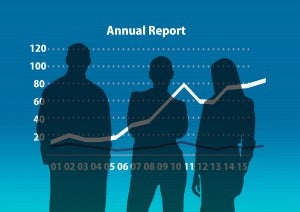 In 2008, EDF launched Climate Corps, an innovative graduate fellowship program committed to jump-starting investment in corporate energy efficiency.
In 2008, EDF launched Climate Corps, an innovative graduate fellowship program committed to jump-starting investment in corporate energy efficiency.
Now, after almost a decade of embedding over 700 fellows inside large organizations across all sectors—public, private and non-profit—we’ve taken a step back to survey the broader landscape.
What did we find? Energy management today looks very different than when we started out. As large organizations have shifted to take on more sophisticated approaches, significant advancements in management strategies have emerged.
And for those of you toiling away on a daily basis in the complicated world of energy management, we’re pleased to offer you a mile-high view of how your efforts fit into a larger picture of progress.
In our new report, Scaling Success: Recent Trends in Organizational Energy Management, we examine the efforts of more than 350 large organizations over eight years. Through careful analysis of over 3,000 energy project recommendations, we have identified five key trends:
- Energy efficiency was just the beginning. Companies have become more strategic and sophisticated about energy management over the years. Equipment upgrades and retrofits have paved the way for higher-level energy analyses and plans, integration of clean energy technologies and more.
- Organizations are turning one win into many. By scaling up energy efficiency projects to be multi-site and multi-facility, companies have clearly moved past the “pilot” or “one-off” stage and are now deploying efficiency measures at scale.
[Tweet “Energy Management Then and Now: What You Need to Know About the Latest Trends”]
- Companies face front-loaded costs, but are realizing greater ROIs on energy projects. The days of the low-cost/no-cost energy efficiency improvement may be over. Projects now require substantial upfront capital investments, but these projects deliver more value.
- Energy projects now pack more environmental bang for the buck. As technologies have improved and companies have become more strategic about how they direct spending, investments in energy efficiency are providing significantly more greenhouse gas reductions per dollar spent than they did eight years ago.
- Strategic energy management is still hard work. Despite progress made over the years, corporations, municipalities and other large institutions still face significant barriers to project implementation.
To distill it down even further: strategic energy management has evolved from a one-off initiative into an organizational imperative. Despite the barriers, companies are scaling up their efficiency efforts, integrating clean energy more regularly and using data to drive their smart energy strategies.
If you’ve been a part of this evolution (or revolution?), congratulations! If you haven’t, now is the time to take advantage of all these lessons learned and get on board.
Either way, we invite you to learn more about our key takeaways, read our full report and keep moving forward on accelerating your clean energy projects.
This post originally appeared on our EDF+Business blog.









